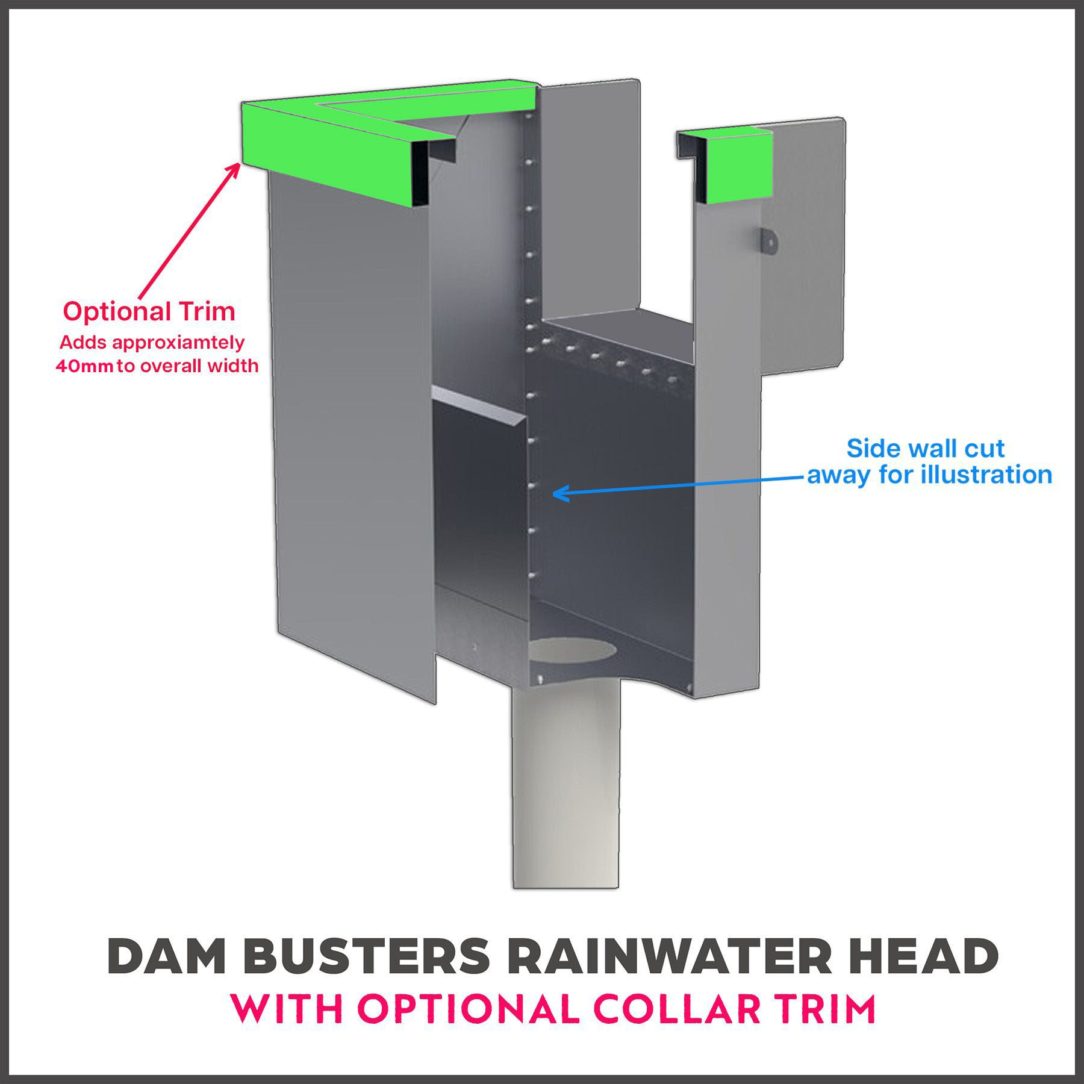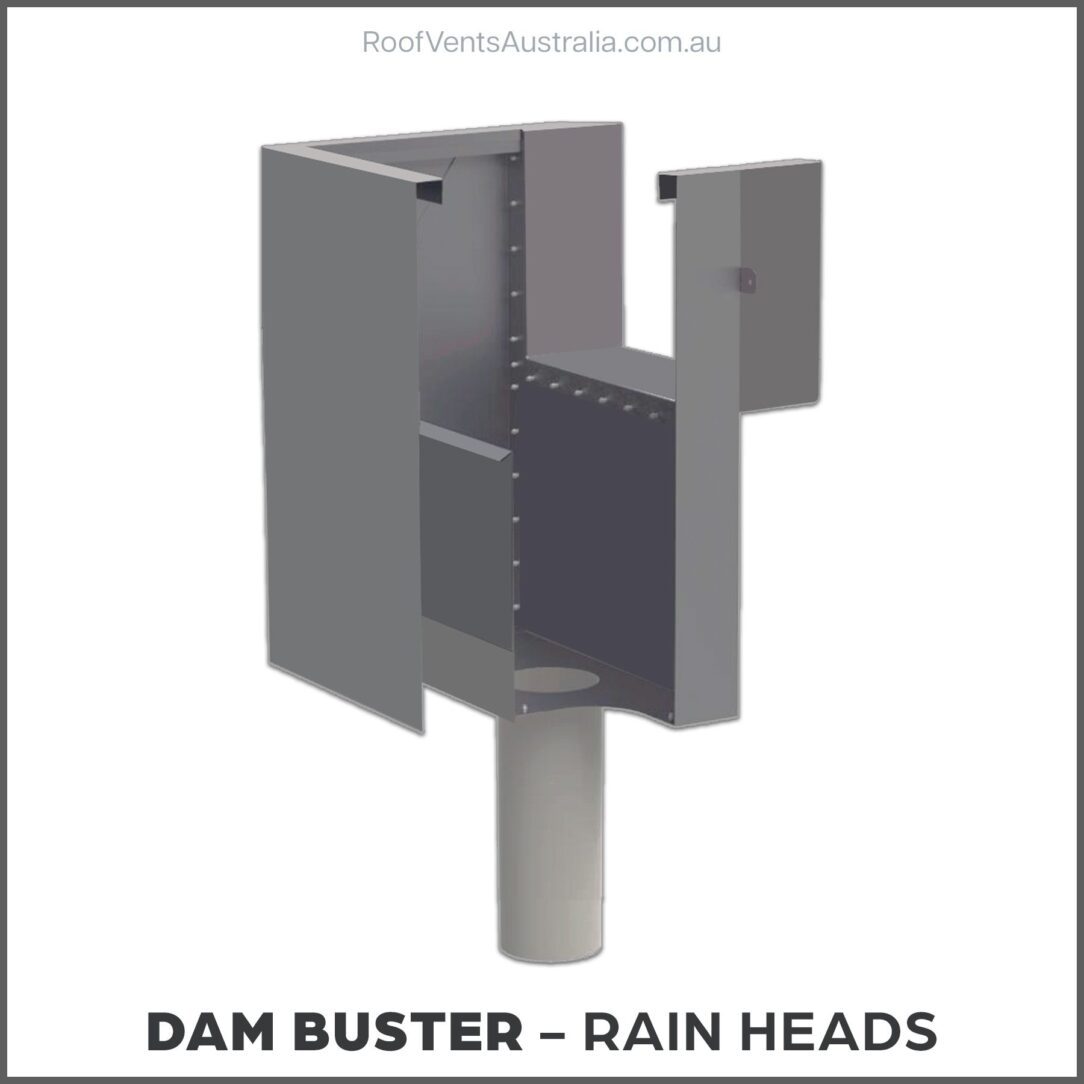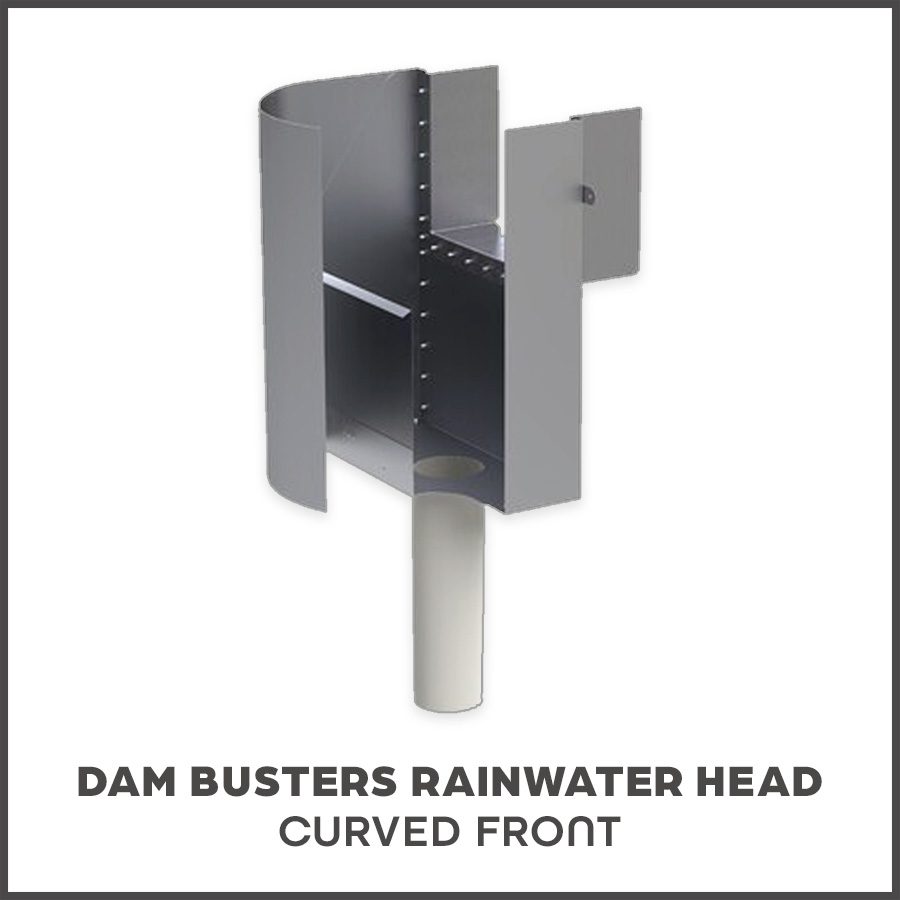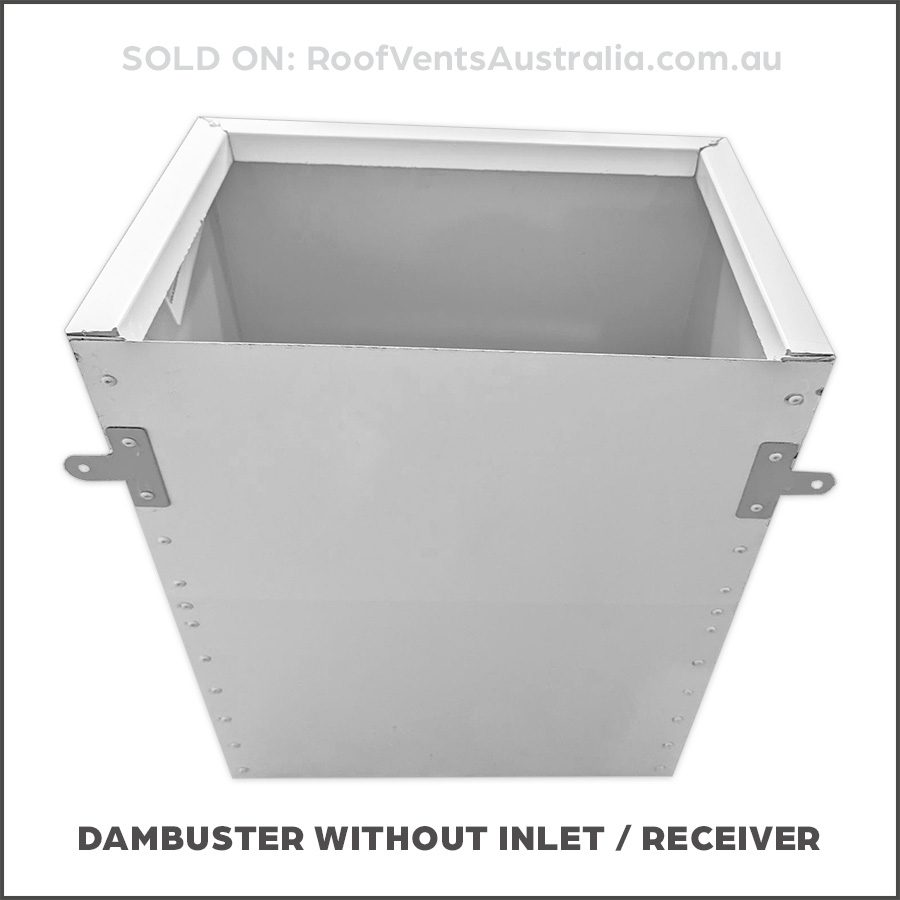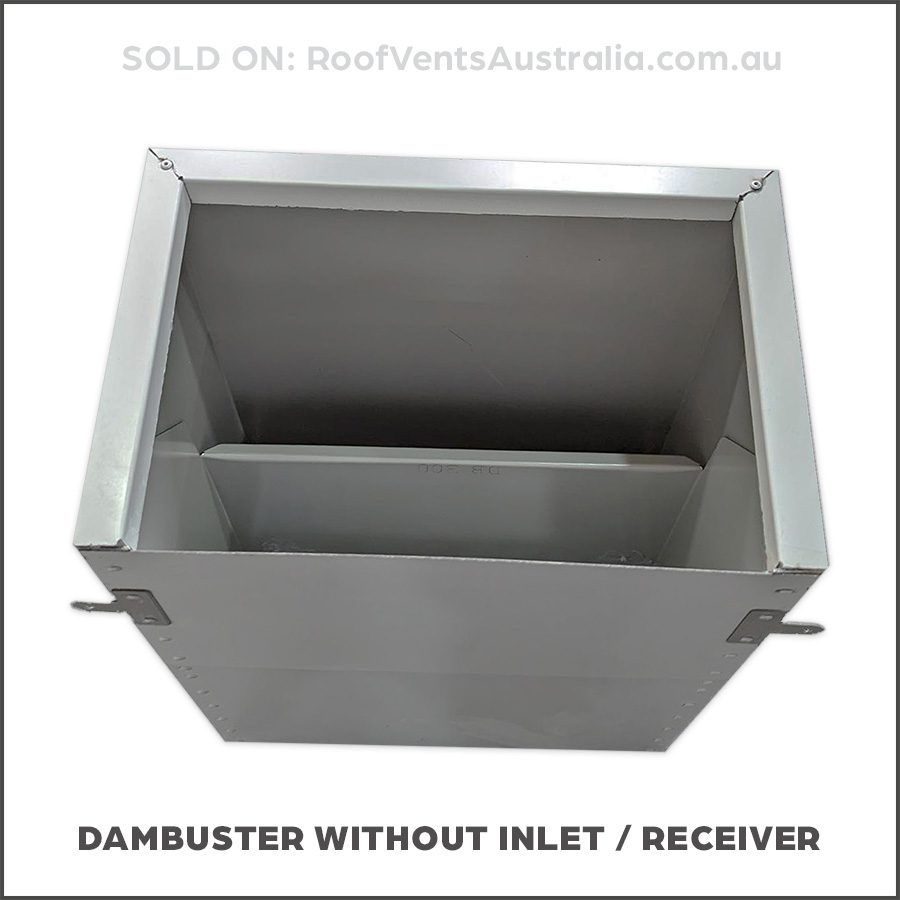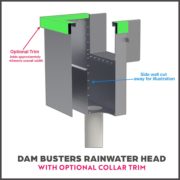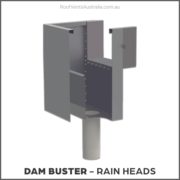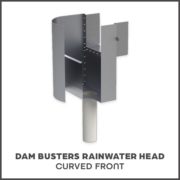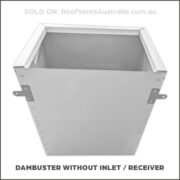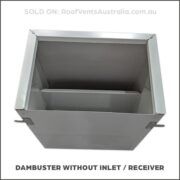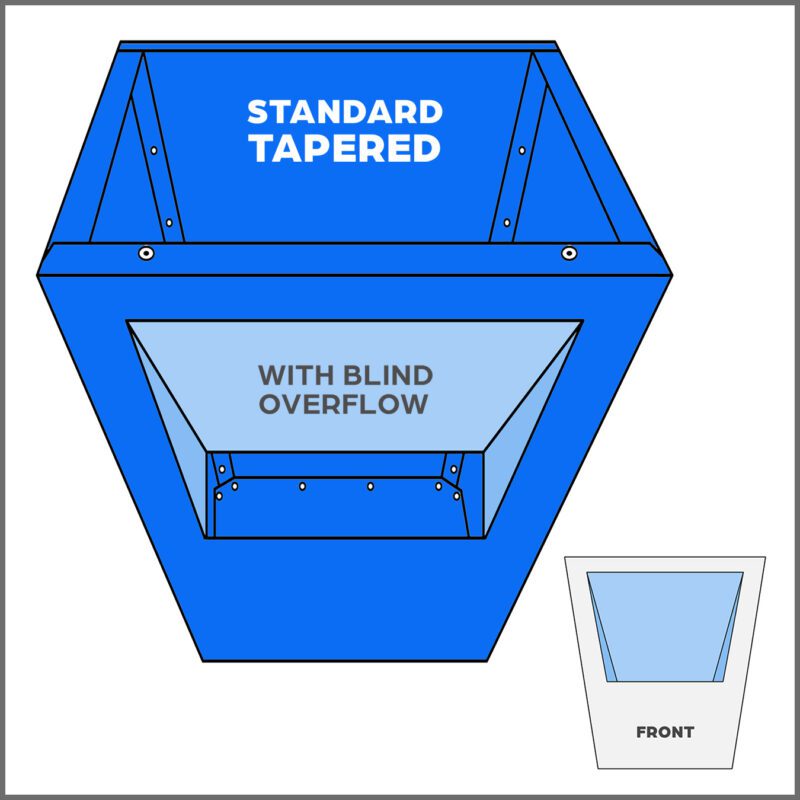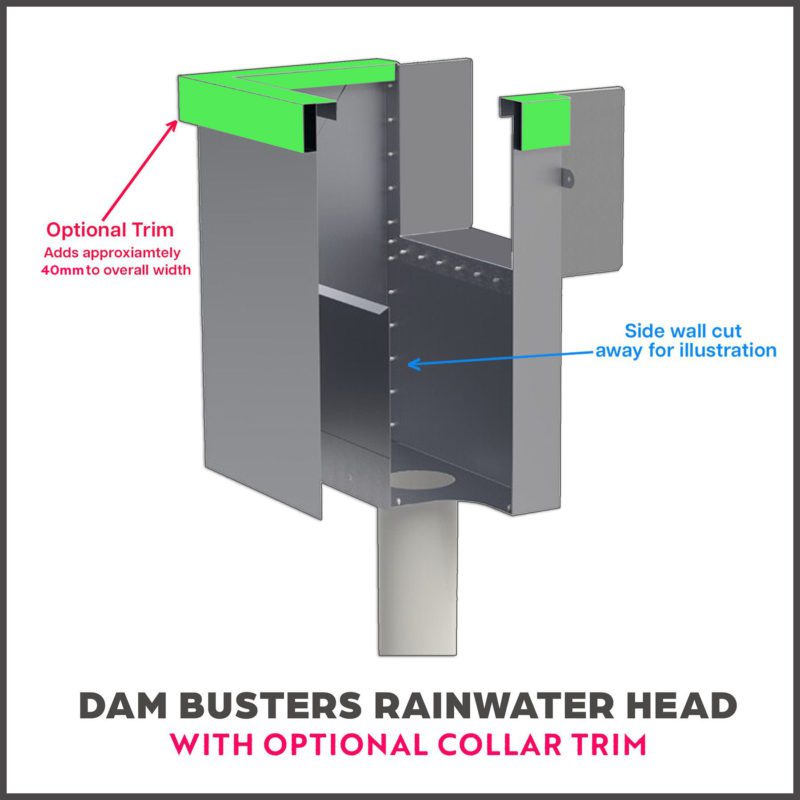DamBuster Rainwater Heads For Sale – Best Online Prices + Free Delivery
Price range: $352.00 through $730.00 & Free Shipping
Australian Standard Compliant
Best Prices Online + Free Delivery
Price the same with or without Inlet / Receiver
Description
Dambuster Rainwater heads for Sale
Best Prices Online + Free Delivery
Order WITH or WITHOUT Inlet – Choose on This Page
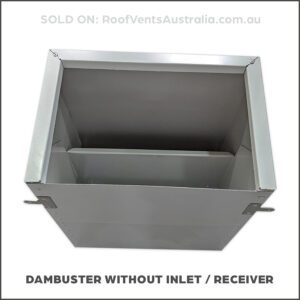
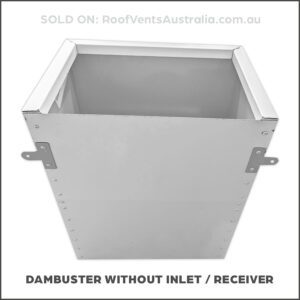
**Unlocking Efficiency:
The Role of Rainheads in Australian Rooftop Runoff Management**
In the realm of water management, particularly in a country like Australia where water conservation is crucial, understanding the nuances of rainwater runoff becomes paramount. One vital element in this ecosystem is the rainhead, a seemingly small component that plays a significant role in optimising the efficiency of rainwater collection systems, particularly from roofs.
**What’s the Difference Between a Sump and a Rainhead?**
To delve into the functionality of rainheads, it’s essential to distinguish them from sumps. A sump acts as a reservoir for water, typically found at the lowest point of a system, allowing sediment and debris to settle, while a rainhead functions as a collection point for rainwater, situated at the top end of downpipes or gutters, preventing debris from entering the drainage system.
**What Exactly is a Rainhead?**
A rainhead, also known as a dambuster rainhead, serves as a barrier between the spouting and downpipes of a roof, filtering debris and leaves while allowing water to flow freely. Its design is crucial in optimizing the collection of rainwater, ensuring cleaner water enters the downpipes and subsequently, rainwater tanks.
**How Do You Install a Rainwater Head?**
Installation of a rainhead involves positioning it strategically along the gutter or downpipe system. It’s essential to ensure a proper fit, allowing for efficient water flow while preventing debris buildup.
**Understanding Capacity and Placement**
The capacity of a rainhead varies depending on its design and size. Typically, it should be positioned at a height that facilitates easy maintenance and accessibility, ensuring efficient water collection without impeding pedestrian pathways.
**The Power of Rain Shower Heads**
While rain shower heads differ from rainheads in functionality, their power is a factor of consideration. Rain shower heads provide a luxurious bathing experience, often mimicking natural rainfall, but their power depends on the water pressure of the system they’re connected to.
**DIY Rainwater Tank Installation: Feasible or Not?**
Installing a rainwater tank is indeed a feasible DIY project for many Australians. However, it’s crucial to adhere to local regulations and guidelines to ensure proper installation and compliance with safety standards.
**The Role of Rainheads in the System**
Rainheads serve as essential components in rainwater collection systems, acting as guardians against debris and contaminants that may compromise water quality. Their placement between spouting and downpipes is strategic, ensuring only clean water enters the storage tanks.
**Styles and Worth of Rainheads**
Rainheads come in various styles to suit different architectural aesthetics and functional requirements. Whether traditional or modern, their worth lies in their ability to optimize rainwater collection systems efficiently.
**Standards and Regulations**
In Australia, standards and regulations govern the installation and usage of rainheads, ensuring compliance with water management protocols and safety measures.
**Conclusion**
In the quest for efficient rainwater management, rainheads emerge as unsung heroes, silently ensuring the purity and efficacy of collected water. Understanding their role, installation, and significance is pivotal for every Australian aiming to harness the power of nature’s bounty while conserving precious water resources.
**Expanding Insights: Deep Dive into Rainheads and Rooftop Runoff Management**
In the vibrant landscape of Australia, where every drop of water counts, efficient rainwater management is not just an option but a necessity. Among the myriad components that make up a robust rainwater harvesting system, rainheads stand out as indispensable guardians, safeguarding the purity and efficacy of collected water. In this comprehensive exploration, we delve deeper into the intricacies of rainheads, addressing a myriad of questions that shed light on their functionality, installation, and significance in Australian contexts.
**Understanding Rainheads: Differentiating from Sumps**
To embark on a journey of comprehending rainheads, it’s imperative to first distinguish them from sumps. While both play pivotal roles in water management, their functions diverge significantly. A sump, typically positioned at the lowest point of a drainage system, acts as a reservoir for water, allowing sediments and debris to settle, thereby preventing blockages. On the other hand, a rainhead, positioned strategically at the top end of downpipes or gutters, serves as a collection point for rainwater, intercepting debris and leaves while facilitating unimpeded water flow. This fundamental disparity underscores the unique role rainheads play in optimizing rainwater collection systems, particularly in mitigating potential blockages and ensuring the purity of harvested water.
**Installation Demystified: Navigating the Process**
Installing a rainhead is a crucial step in setting up an efficient rainwater harvesting system. The process entails strategic positioning along the gutter or downpipe system, ensuring seamless integration with existing infrastructure. While the installation procedure may vary depending on the specific design and requirements of the rainhead, adherence to fundamental principles is key. It’s imperative to achieve a proper fit, allowing for optimal water flow while minimizing the risk of debris buildup. Moreover, considering factors such as capacity and placement height is essential for maximizing the efficacy and accessibility of the rainhead. Striking a balance between functionality and practicality ensures a seamless installation process, laying the groundwork for efficient rainwater management.
**Capacity Considerations: Balancing Functionality and Efficiency**
The capacity of a rainhead plays a pivotal role in determining its effectiveness in managing rooftop runoff. Varying in size and design, rainheads are engineered to accommodate different volumes of water, catering to diverse needs and preferences. When selecting a rainhead, it’s essential to consider factors such as roof size, rainfall intensity, and drainage requirements to ensure optimal performance. Additionally, determining the ideal placement height is crucial for facilitating ease of maintenance and accessibility. Striking the right balance between capacity and placement height is paramount for maximizing the efficiency of rainwater collection systems, empowering individuals to harness nature’s bounty sustainably.
**Exploring Rain Shower Heads: A Comparative Analysis**
While rainheads and rain shower heads share similarities in name, their functionalities differ significantly. Rain shower heads, synonymous with luxury bathing experiences, are designed to mimic the gentle cascade of natural rainfall, providing a rejuvenating showering experience. Unlike rainheads, which serve a utilitarian function in rainwater management, rain shower heads prioritize aesthetics and comfort, enhancing the overall bathing experience. However, the efficacy of rain shower heads is contingent upon the water pressure of the system they’re connected to, highlighting the importance of a well-designed and maintained plumbing infrastructure. While rain shower heads may not directly contribute to rainwater harvesting, their presence underscores the broader ethos of sustainable living and environmental consciousness.
**Empowering DIY Enthusiasts: Rainwater Tank Installation Simplified**
For many Australians, the prospect of installing a rainwater tank represents a tangible step towards sustainable living and water conservation. While professional installation services are available, undertaking the installation process as a DIY project is not only feasible but also rewarding. However, it’s crucial to approach the task with diligence and adherence to relevant regulations and guidelines. From selecting an appropriate tank size and location to ensuring proper plumbing connections and structural support, attention to detail is paramount. By familiarizing oneself with local regulations and seeking guidance from reputable sources, individuals can embark on a DIY rainwater tank installation journey with confidence, contributing to the collective efforts towards water conservation and environmental stewardship.
**In Conclusion: Harnessing the Power of Rainheads for Sustainable Water Management**
In the intricate tapestry of rainwater management, rainheads emerge as indispensable components, silently orchestrating the efficient collection and utilisation of rooftop runoff. From their strategic placement between spouting and
downpipes to their role in filtering debris and contaminants, rainheads embody the ethos of sustainable living and environmental stewardship. By understanding their functionality, installation requirements, and significance in Australian contexts, individuals can unlock the full potential of rainheads as guardians of water purity and efficiency. As we navigate the complexities of water scarcity and climate change, embracing innovative solutions such as rainheads paves the way towards a more sustainable and resilient future for generations to come.
Additional information
| Model | CURVED-200, CURVED-300, CURVED-400, CURVED-500, CURVED-600, FLAT-200, FLAT-200+TRIM, FLAT-300, FLAT-300+TRIM, FLAT-400, FLAT-400+TRIM, FLAT-500, FLAT-500+TRIM, FLAT-600, FLAT-600+TRIM |
|---|---|
| Colorbond® | Jasper, Manor Red, Wallaby, Woodland Grey, Pale Eucalypt, Cottage Green, Iron Stone, Deep Ocean, Monument, Night Sky, Dover White, Surfmist, Southerly, Shale Grey, Bluegum, Windspray, Basalt, Classic Cream, Paperbark, Evening Haze, Dune, Gully, Surfmist MATT, Dune MATT, Shale Grey MATT, Bluegum MATT, Basalt MATT, Monument MATT, Surfmist ULTRA, Shale Grey ULTRA, Dune ULTRA, Wallaby ULTRA, Woodland Grey ULTRA, Monument ULTRA |
| Standard Nozzles | 100mm Round – Included Free, 100×50 – Included Free, 100×75 – Included Free, 90mm Round – Included Free, No Nozzle Required |
| Shipping to | VIC, NSW, QLD, WA, SA, TAS, ACT |
| Inlet/Receiver | With, Without |

